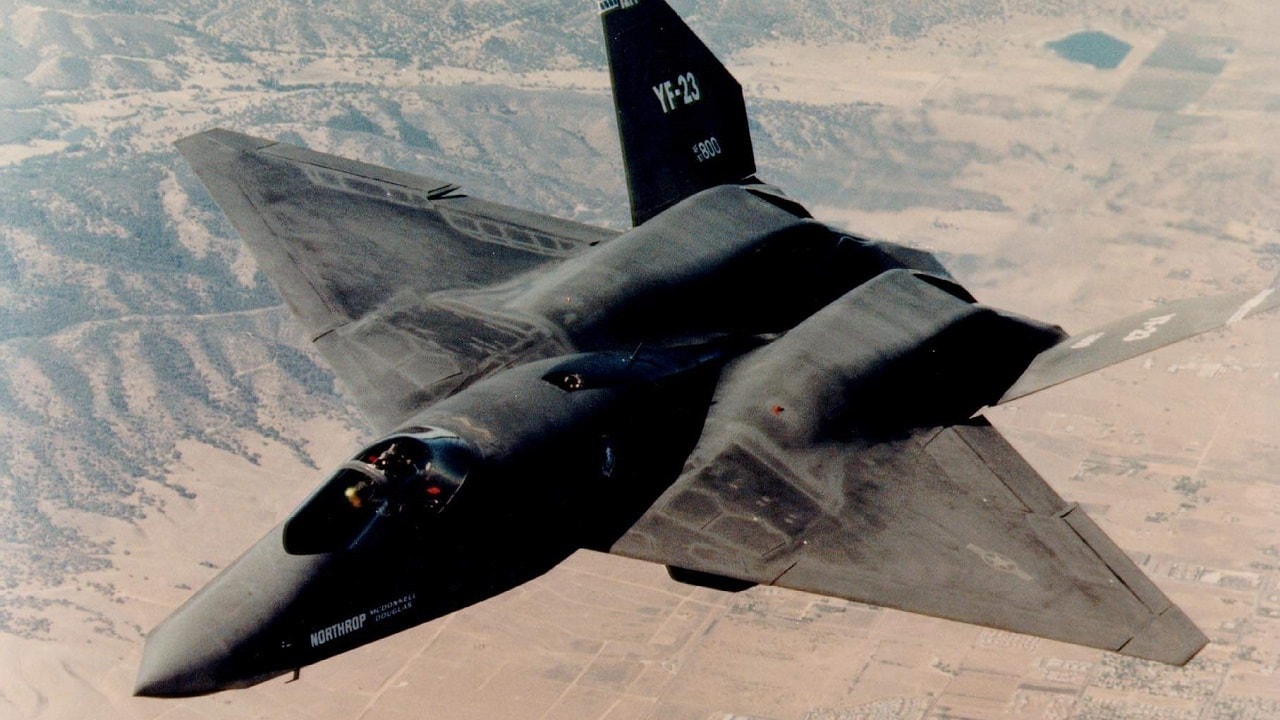NGAD is the future of the U.S. Air Force.
How expensive will it be?
Can it truly surpass the F-22 and F-35? A top expert gave us her take?
Here Comes NGAD
The development and progress of the Next Generation Air Dominance (NGAD) program remain a top priority for the military, Air Force Secretary Frank Kendall told the Brookings Institute last month.
This “family of systems” aims to construct a sixth-generation air superiority fighter to replace the legendary Lockheed Martin F-22 Raptor.
The Air Force plans to innovatively use unmanned aerial vehicles (UAVs) to fly alongside the piloted jets in a structure known as Collaborative Combat Aircraft. Lockheed Martin released a new series of artwork showcasing mock-ups of the new sixth-generation fighter last March.
The sleek and tailless aircraft is drawn refueling from the manufacturer’s LMXT tanker concept, which the image is clearly promoting. Other than the jet’s artist-rendered exterior and refueling capability, the extent of its true potential remains highly secretive.
A Brief Overview of the NGAD Program
Originally conceptualized in 2014, the NGAD program strives to develop an air superiority system for the U.S. Air Force by the 2030’s. According to the service, the program examines five different technologies that are likely to be incorporated in a future generation airframe, namely stealth, advanced weapons, propulsion, digital design and thermal management of the aircraft signature.
While the new fighters will feature cutting-edge and innovative enhancements, its price tag will likely be hefty. In fact, Kendall indicated that a single airframe could cost “multiple” hundreds of millions of dollars, which could mean more than double the price of an F-35 Lightning II fighter.
Kendall has justified the sixth-generation’s cost by reaffirming that the U.S. “cannot afford to not have air superiority” in light of escalating tensions with China.
If a conflict emerges in the South Pacific, the inclusion of these fighters in combat could make all the difference in outcome.
The UAVs that will accompany the piloted fighters, however, are expected to be much less expensive. The Air Force Secretary detailed that “The expectation is that these (unmanned) aircraft can be designed to be less survivable and less capable, but still bring an awful lot to the fight in a mixture that the enemy has a very hard time sorting out and dealing with,” adding that “You can even intentionally sacrifice some of them to draw fire, if you will, to make the enemy expose himself.”
Are Dog-Fighting Days Over?
According to what we know about the NGAD fighter, its frame, and size may be a lot larger than expected. While the smaller F-22’s maneuverability gives it a dogfighting edge, a new sixth-generation fighter could use its heft to carry heavier payloads.
A report published in Sandboxx News explains that “A larger aircraft the size of a B-21 may not maneuver like a fighter. But that large an aircraft carrying a directed energy weapon, with multiple engines making substantial electrical power for that weapon, could ensure that no enemy flies in a large amount of airspace. That is air dominance.”
The NGAD Program is on the Right Trajectory
Over the summer, Kendall announced that the Air Force would deliver some of the NAGD program’s capabilities before the end of the decade. The Air Force Secretary revealed that the NAGD program had begun the Engineering, Manufacturing, and Development (EMD) phase, which is one step from production. If Kendall’s timeline is accurate, the process to produce the sixth-generation fighter would be lightyears faster than its predecessors.
As tensions between the U.S. and China continue to soar, the quicker the NGAD program can complete development and production the better.
FROM 19FortyFive: H-20: China Is Building a New Stealth Bomber
FROM 19FortyFive: Is Russia’s Su-57 Felon Stealth Fighter a Total Bust?
FROM 19FortyFive: Merkova: Israel Has A Super Tank
Maya Carlin is a Senior Editor with 19FortyFive. She is also an analyst with the Center for Security Policy and a former Anna Sobol Levy Fellow at IDC Herzliya in Israel. She has by-lines in many publications, including The National Interest, Jerusalem Post, and Times of Israel.

